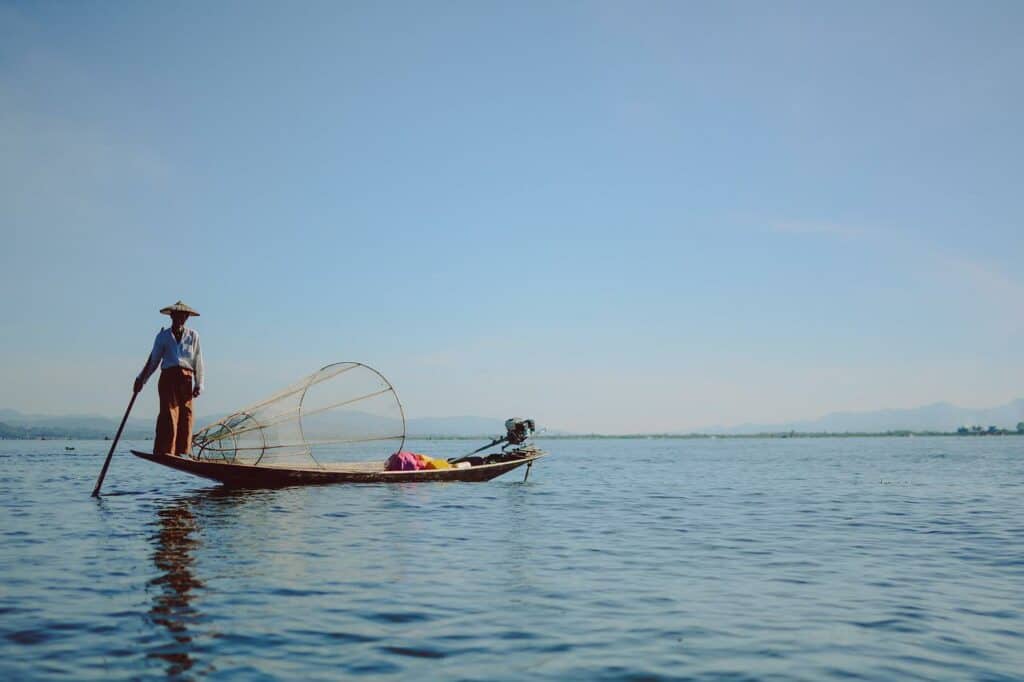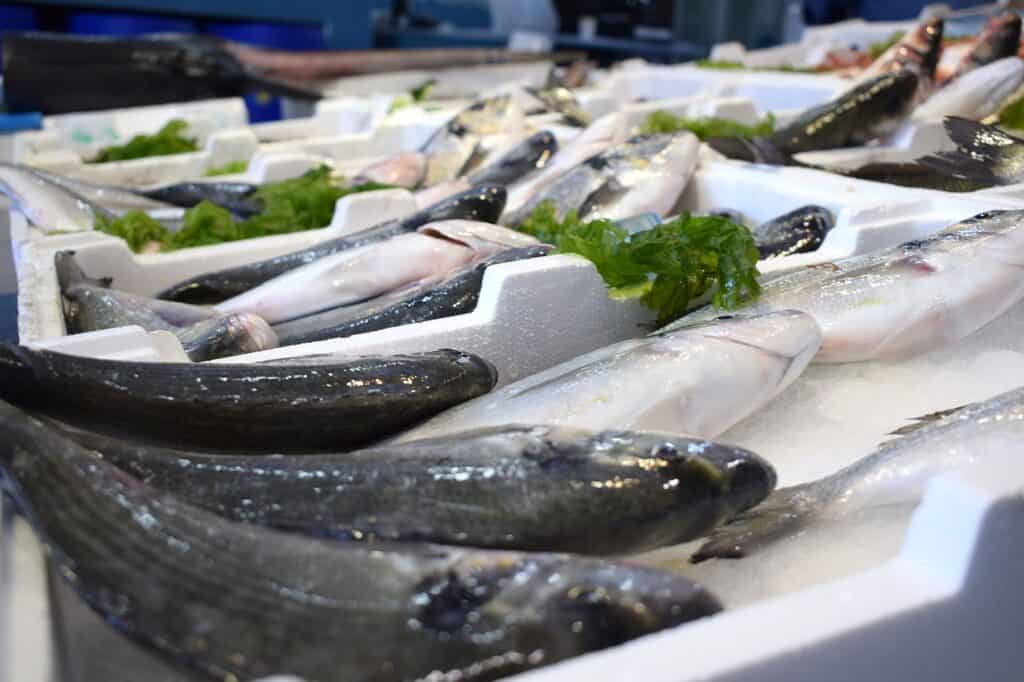Not all fish farms are sustainable
If you’re like most people, you probably think of sustainable fish farming, or aquaculture as its commonly known, as an environmentally-friendly way to produce seafood. After all, fish farms help reduce pressure on wild fish populations. Unfortunately, not all fish farms are created equal. Some fish farms can do more harm than good. They are also sites where there’s massive use of antibiotics. That’s why it’s important to choose sustainable fish farms that follow best practices for environmental stewardship.

What Is sustainable fish farming?
The production of seafood in a way that is kind to the environment can be accomplished through the practice of sustainable fish farming. Methods that conserve wild fish populations and cause the least amount of pollution are used in sustainable fish farming. They also do not make use of potentially hazardous chemicals or pesticides. At least, in principle.
What Are The Benefits Of Sustainable Fish Farming?
Fish farms that don’t hurt the environment has a lot of upsides. Fish farms that are managed sustainably can lessen the impact that fishing has on wild fish populations, cut down on pollution, and help preserve the natural environment. Conventional fish farms are typically more likely to employ a greater number of chemicals and pesticides than sustainable fish farms.
Lack of labeling standards hampers acceptance
Unfortunately it comes to organic seafood labeling, there is no widely accepted definition of what it means to practice sustainable fish farming. Whether or not a farm’s fish farming procedures and disciplines are sustainable is up for debate. Fish farming is unfortunately associated with several dishonorable activities, which are detrimental to the industry’s long-term viability.
A fast growing industry compounds the standardization problem
Moreover it has emerged as one of the fastest-growing food-producing enterprises in the world, outpacing wild-capture fisheries that have slowed down due to fish depletion. Our wild-capture fisheries simply cannot meet the demand, despite legislation and management plans based on the greatest available knowledge. This means that the food business is increasingly relying on fish farms to meet demand. If we don’t come up with sustainable alternatives to overfishing, it will have a global impact on the world and the world’s population.
Fish farms generate polluted water
Some argue that a large scale shift to fish farming isn’t sustainable because many fishermen still use methods that harm the environment. Furthermore, they pose a threat to the environment and, in some cases, humans. Large amounts of water from rivers or the ground are taken by some fish farms, which then return tainted water to the area’s lakes and streams. This hurts the water quality.
Financial challenges of sustainable fish farms
The fact that sustainable methods of fish farming can often be more expensive than traditional ones is one of the challenges that they present. Fish farmers who practice sustainable methods may also have to contend with public opinion since some individuals continue to believe that sustainable practices are not as successful or efficient as conventional ways.
In general, sustainable fish farming is an excellent method for producing seafood while reducing the negative effects of that production on the surrounding environment. If more people were to support sustainable fish farms, it would help to lessen the strain that is being placed on wild fish populations and improve the condition of our waterways.
Signs of a sustainable fish farm
So, what can fish farms (and we as consumers) do to make fish farming more environmentally friendly and environmentally sustainable? That’s a really good one. Fish farming was expected to surpass wild-capture fisheries for the first time in 2021. Unfortunately, many fish and seafood farms are wreaking havoc on local ecosystems due to their use of unsustainable practices.
In contrast, fish farms that adhere to sustainable practices avoid this problem. To ensure the health and sustainability of their fish, they take great care to avoid causing harm to nearby ecosystems. To create sustainable seafood, they avoid utilizing dangerous substances like additives, chemicals, hormones, or antibiotics. No animal waste is used in the production of their fish pellets. In place of this, they use a fish feed that is primarily vegetarian and carefully balanced to ensure optimal health.
To ensure the health of the environment, sustainable fisheries employ only a small amount of land and are constantly assessing the water’s purity. The reason they do this is to ensure that native species of fish are not pushed about by farmed ones. In addition to using as many parts of the fish as possible and coming up with inventive ways to repurpose components that would otherwise be thrown away, environmentally responsible fish farmers also look for ways to limit the amount of waste they produce.
Products From Sustainable Fish Farms

Fish solids and fish oils
Utilized in the production of biodiesel fuel or provided as a nutritious supplement to animal feed.
Collagen
Used in cosmetics, and gelatin, which is used in a wide variety of medications, may both be extracted from fish scales.
Fish skin
Serve as a substitute for leather in the fashion business. Everything else is fantastic for making compost, which can then be utilized to nourish plants in the region.
To be more sustainable, some fish farms are even moving to land-based aquaculture production systems. This could be great for big cities with a lot of people who want fresh fish. Other fish farms are moving out into the open ocean, which is better for the fish and the environment. The open sea has clean water, and the strong, steady currents help keep pests and fish waste away from the farms. Overall, the sustainable aquaculture industry is making a lot of progress, but there are still a lot of problems to solve. It will take a lot of work from everyone to make sustainable fish farming the norm and a long-term solution, but it is possible.
Additional Notes
If you’re into recreational fishing, try catch-and-release fishing. Discuss what you’ve learned with other anglers and acquire any specific approaches, such as those for deep-water fishing. You can also dispose of used fishing lines properly so they don’t entangle fish and other wildlife in local rivers.
You can also limit your fish consumption to plentiful species, which are more likely to reproduce. Do not eat fish from declining or overfished populations.
Do not buy fish from farms with a bad reputation and dangerous production methods. The market always meets public needs. If consumers demand greener farming and fishing, the business will adapt.
Tips For Sustainable Fish Farms
There are several things that you can do to support sustainable fish farming:
- Educate yourself and others about the importance of sustainable seafood production and the many issues facing our oceans today.
- Support businesses and organizations that are working to improve the sustainability of the seafood industry.
- Buy sustainable seafood from responsible retailers and restaurants.
- Advocate for better management of our oceans and more sustainable seafood production practices.
Some of the most pressing issues in our seas are being addressed by a rapidly expanding industry: sustainable fish farming. You can help protect our oceans and the creatures that call them home by supporting sustainable fish farming. There are many ways to eat healthy, sustainably caught fish and support a responsible sector.
Final Thoughts
The sector of sustainable fish farming is fast expanding and is attempting to address many of the difficulties that are now confronting our seas. By assisting sustainable fish farms, you can do your part to protect our oceans and the wildlife that make their homes there. There are a variety of channels via which one can acquire seafood that is harvested responsibly and support the industry.
